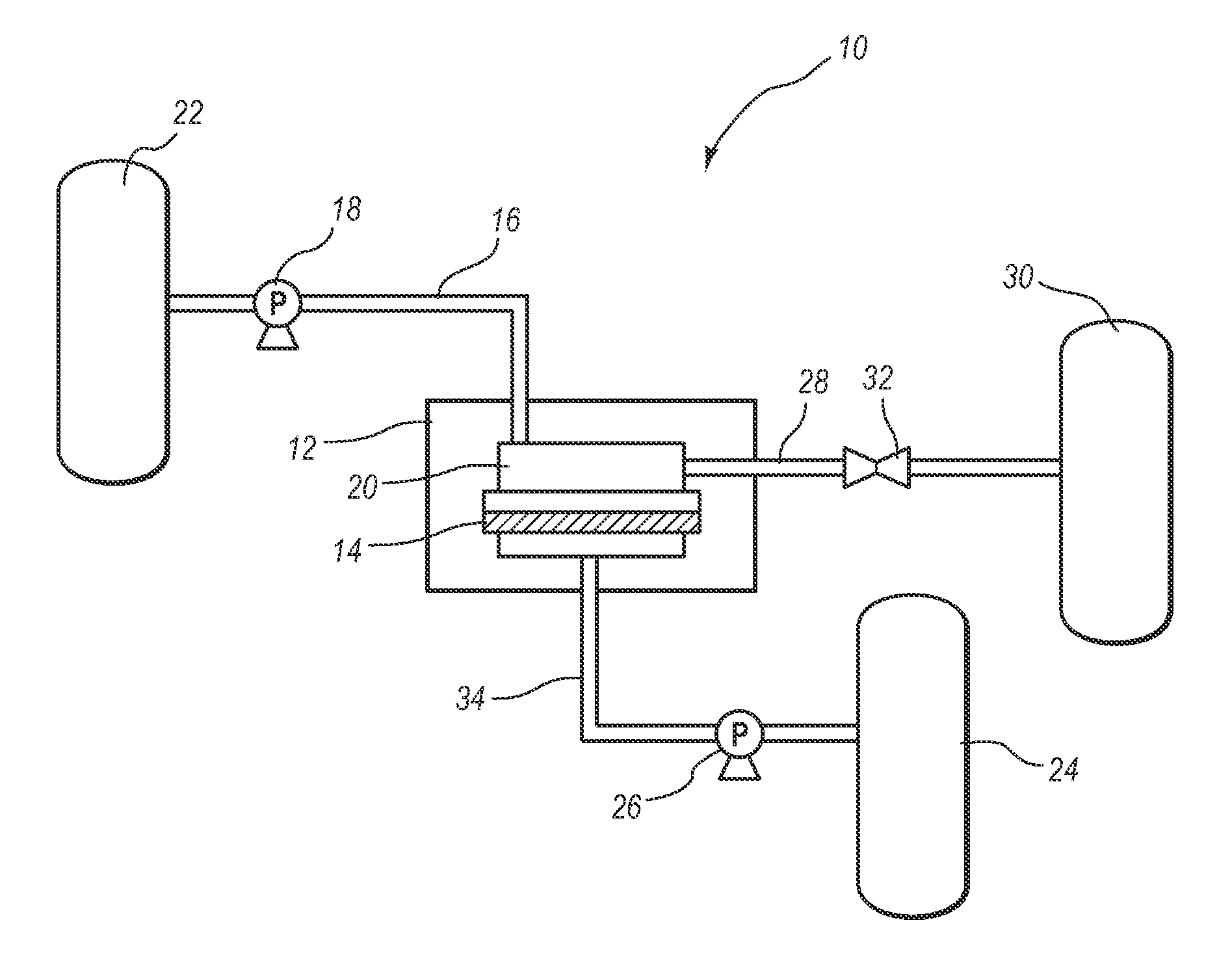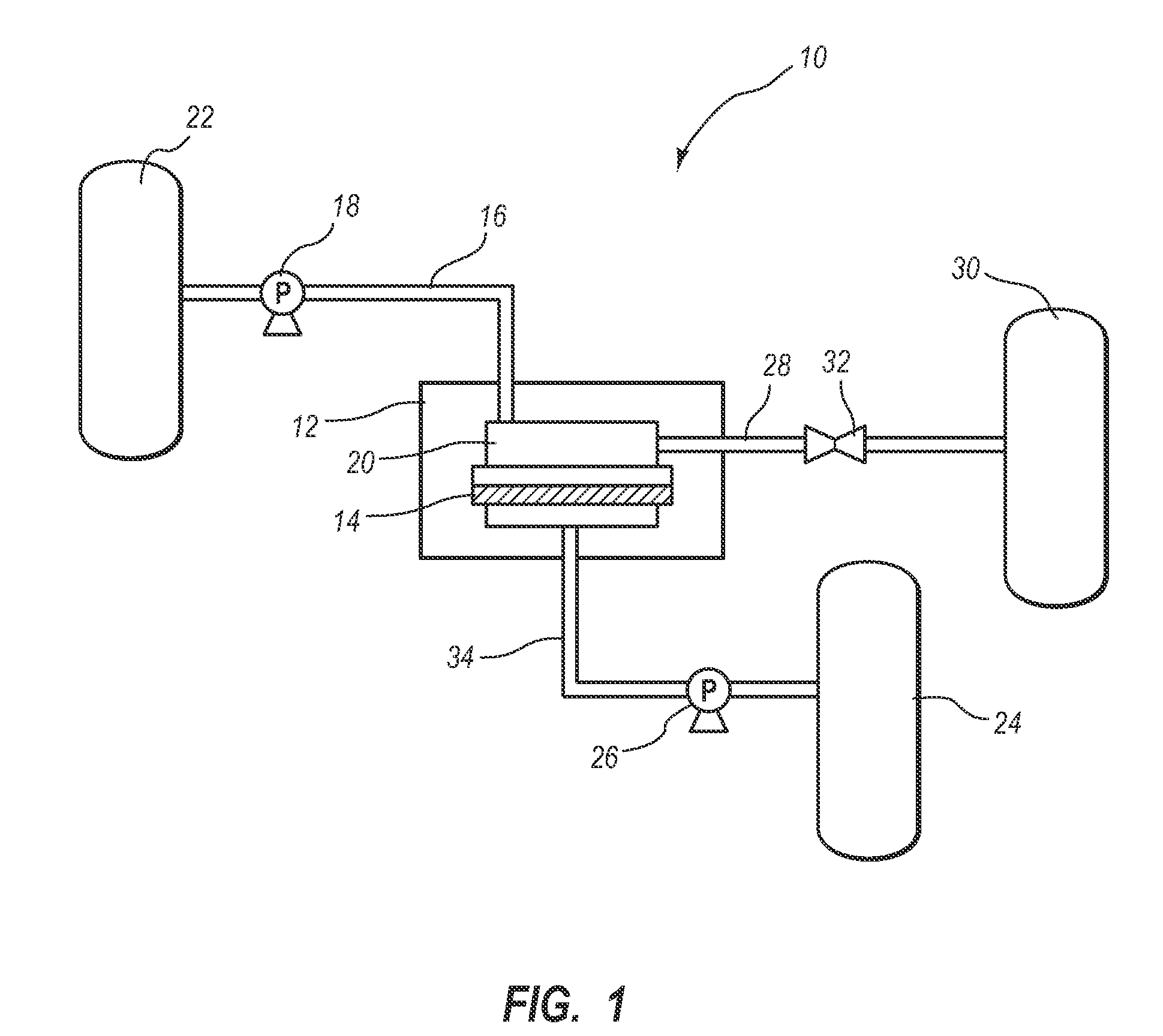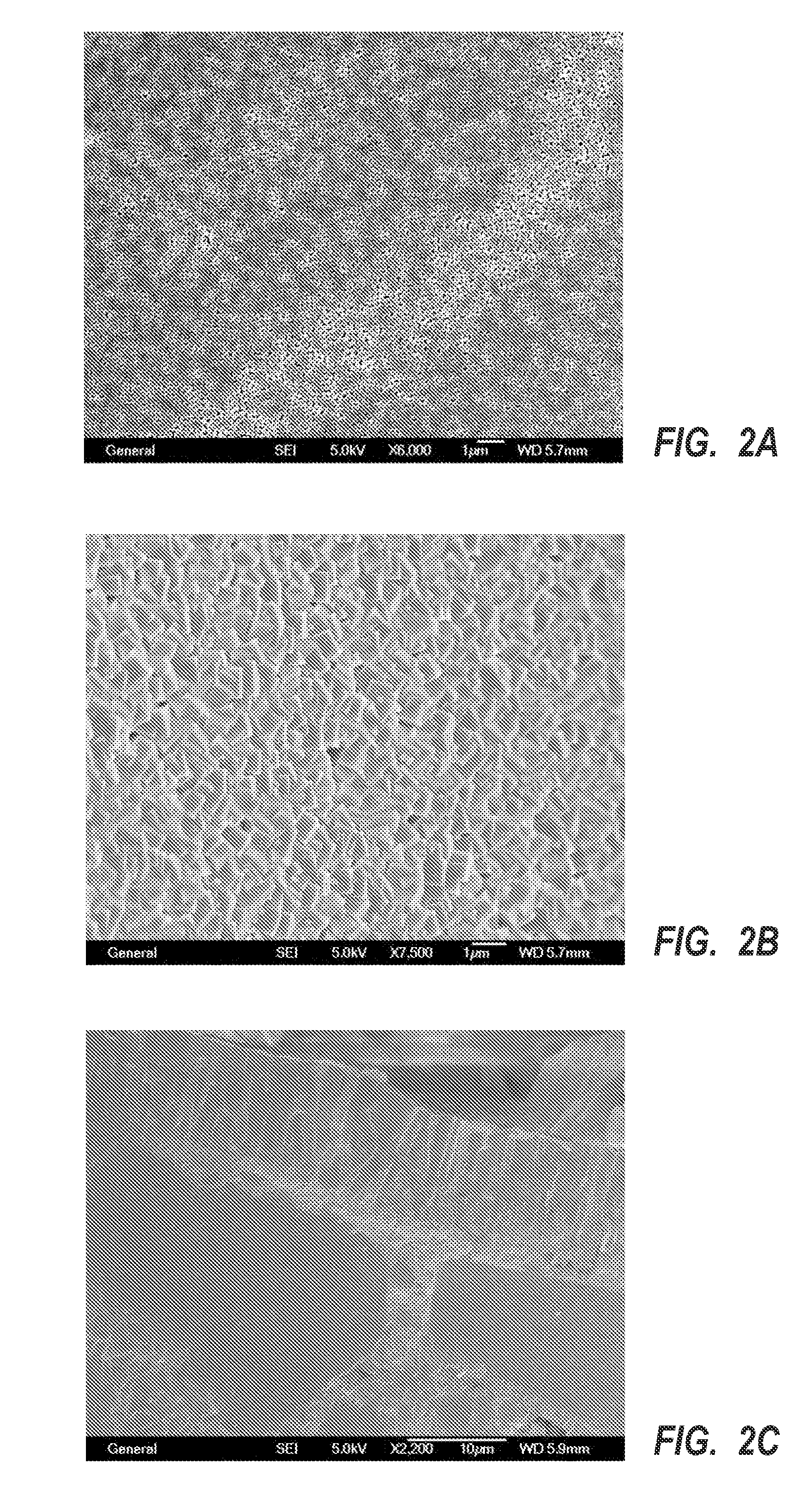Zeolite membrane and methods of making and using same for water desalination
a technology of zeolite membrane and zeolite membrane, which is applied in the direction of membranes, physical/chemical process catalysts, other chemical processes, etc., to achieve the effects of high water flux rate, high percentage of ion rejection, and efficient desalination of sea water
- Summary
- Abstract
- Description
- Claims
- Application Information
AI Technical Summary
Benefits of technology
Problems solved by technology
Method used
Image
Examples
example 1
Manufacturing Silicalite-1 Membrane
[0054]Example 1 describes a method for manufacturing a silicalite zeolite membrane suitable for use in water desalination. A TPAOH solution (16 g; 15.4%) was added to 8 ml TEOS at 140° C. in a Teflon-lined autoclave. After 24 h, the MFI (silicalite) nanocrystal seeds 150 nm in size were obtained. A suspension (20 g / L) of the zeolite seed particles was prepared by mixing the seed particles with water and adjusting the pH of the solution to 10 using an aqueous NH3 solution. Adjusting the pH to 10 helped to prevent the seed particles from aggregating together in the suspension.
[0055]A coarse glass frit with pore size of 20 μm was used as the support and washed with deionized water under ultrasonic vibration five times and dried at 85° C. The glass frit was then wetted and then immediately coated with the seed suspension by drop-wise addition. Only a small amount of seed suspension was required and the aqueous layer was evaporated quickly leaving only ...
example 2
Use of Membranes for Water Desalination
[0057]Example 2 describes a method for using the membrane of Example 1 to perform sea water desalination using reverse osmosis. A plurality of membranes manufactured according to the method described in Example 1 were tested using reverse osmosis. The reverse osmosis experiments were conducted at room temperature under standard atmospheric pressure. Solutions containing 3.5% NaCl, KCl, CaCl2, MgCl2, were prepared. The filtrate was analyzed using ICP to analyze the ion content. The amount of permeate was measured by weighing the liquid nitrogen cold trap before and after the permeation. Each separation experiment was performed over for 7 to 8 h. After the separation experiment, the membrane was washed with distilled water and dried for future experiments. The separation characteristics can be defined in term of a flux and cation rejection as follows: Flux=P / (S×T), Cation rejection(R)=(Cfeed−Cpermeate) / Cfeed, where P represents the mount of the p...
example 3
Use of Membrane with Simulated Sea Water
[0058]Example 3 describes a method for using the membrane of Example 1 to perform sea water desalination using reverse osmosis. Example 3 was carried out using the same conditions as in Example 2, except that different salt concentrations were used for the feed. Specifically, the salt concentrations in the Feed of Example 3 simulate natural occurring sea water. The results are shown in Table 2.
TABLE 2Ion typeCfeed(w %)Cpermeate(w %)NaCl2.765% 0.062%MgCl20.336%0.0001%Fe2(SO4)30.2135% 0CaSO4 0.14%0KCl0.084%0.0014%
PUM
| Property | Measurement | Unit |
|---|---|---|
| pore diameter | aaaaa | aaaaa |
| pore diameter | aaaaa | aaaaa |
| thickness | aaaaa | aaaaa |
Abstract
Description
Claims
Application Information
 Login to View More
Login to View More - R&D
- Intellectual Property
- Life Sciences
- Materials
- Tech Scout
- Unparalleled Data Quality
- Higher Quality Content
- 60% Fewer Hallucinations
Browse by: Latest US Patents, China's latest patents, Technical Efficacy Thesaurus, Application Domain, Technology Topic, Popular Technical Reports.
© 2025 PatSnap. All rights reserved.Legal|Privacy policy|Modern Slavery Act Transparency Statement|Sitemap|About US| Contact US: help@patsnap.com



